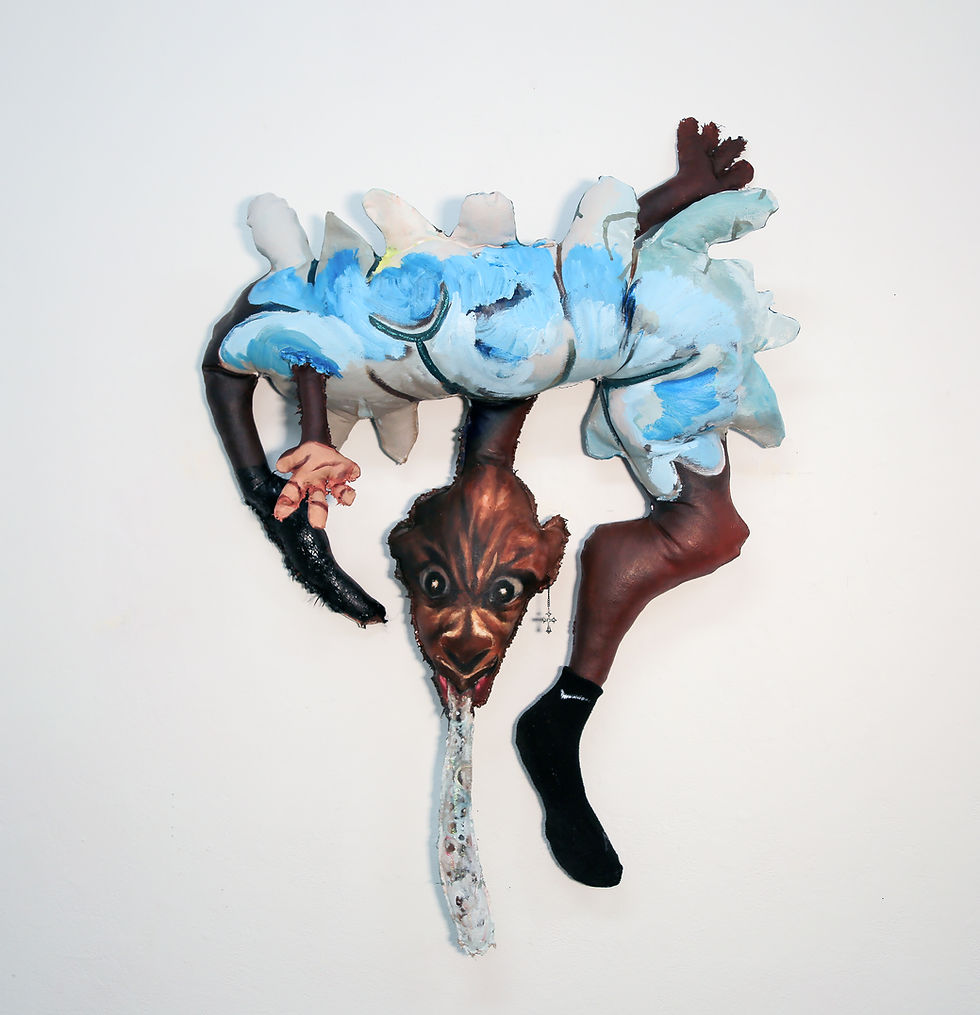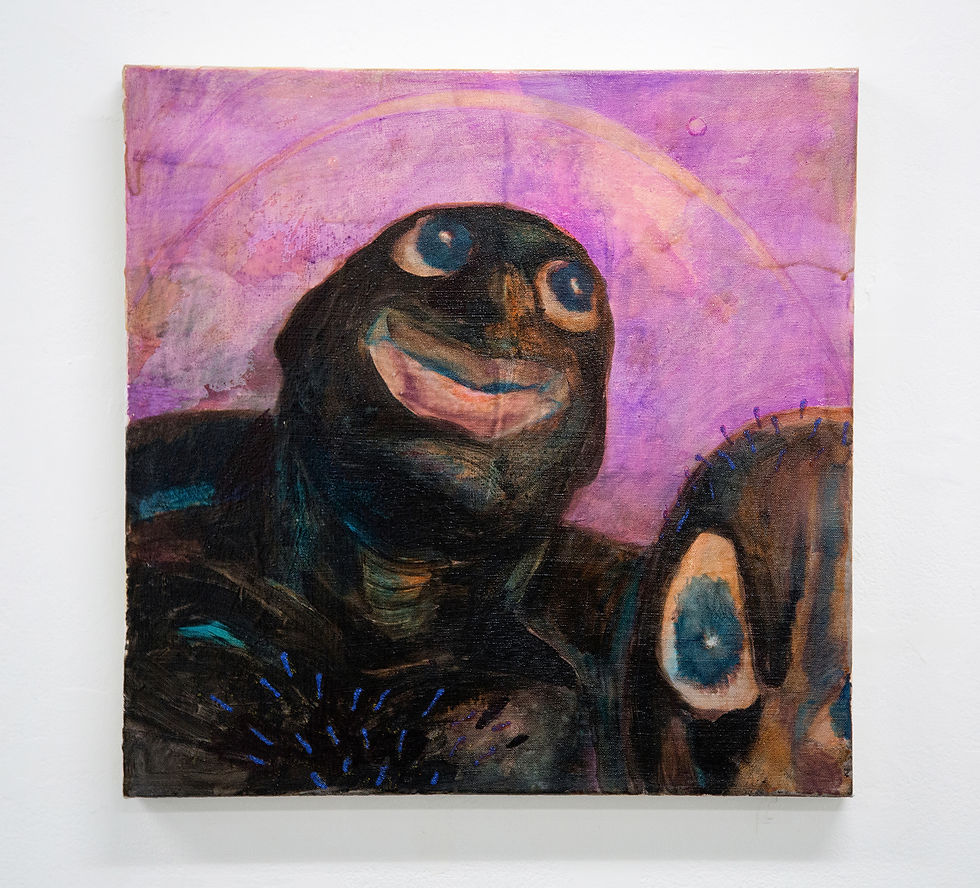Would you like to see the artwork in our exhibitions before anyone else? Join the collectors preview.


In Lowcountry Heat No Joke, Kevin Hopkins presents his effigy series, a syncretic body of work that channels his understanding of Gullah traditions, intergenerational Baptist teachings, and Shonen animation to create aspirational visions of Black American futurity.
Hopkins's effigies, rooted in traditional forms historically used for both healing and harm, are reimagined as conduits of protection, joy, and connection. They challenge the tension within Southern Black American communities where the necessary work of safeguarding Blackness can inadvertently narrow its expression. By centering a singular, trauma-focused narrative, space for diverse identities can be constrained. Hopkins disrupts this by activating the effigy as a site of possibility, affirming the multiplicity of Black identity and speculating on futures where seemingly conflicting pathways for Black American expression nourish one another.
The figures are born from drawn silhouettes on canvas, then sewn and stuffed with cotton. They are subsequently given painted skin, and adorned with "gifted" clothing and jewelry that bear the traces of lived Southern experience—a frayed sock, a cherished earring, a graduation cord. Through spiritual transference, these charged objects strengthen the resonance linking the individual represented to the living collective. This height of connection allows the objects, through their organization and installation, to become active agents in manifesting communal healing.
A central example, "We Seen the Sun," envisions a Black queer youth as a small cub sheltered beneath the instinctive, watchful protection of a parental figure, both echoing the imposing titans of Attack on Titan. Dressed in mismatched socks, a material nod to the Hopkins’ Lowcountry home life, the installation features a slur for queer individuals strategically blocked by the parents' leg. The obstructed text compels the viewer to circle the piece to verify its existence, a movement that mimics the stalking motion of a predator. As the viewer attempts this intrusion, the parental effigy meets their gaze, countering the ostracization often faced by queer individuals within Black Christian families. The work instigates a "dance between object and viewer", a ritual intended to conjure familial acceptance and safety for Black queer people.
The effigies, therefore, are not pleas but a legacy owed—they are blueprints that foretell a reality in which the Black Lowcountry experience sees its family, potential, and community divorced from the persisting ghosts of historic American oppression. These objects present themselves as plans for a future that is ready for claiming.








